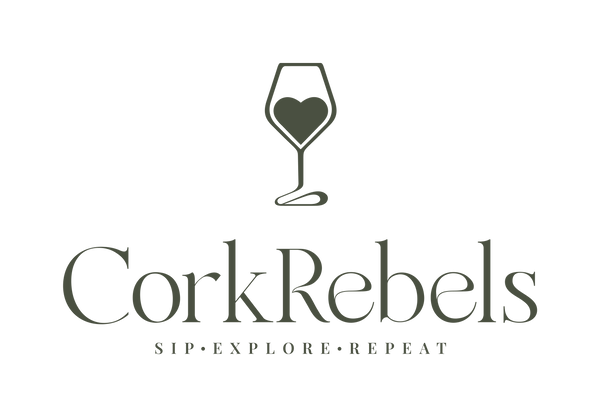A good glass of wine is like a small uprising of the senses – full of aroma, character, and passion. But where do the best wines actually come from? Winemaking in Germany has a long history and inspires with multifaceted growing regions that combine every taste and tradition. From the sunny Palatinate to the steep vineyards of the Moselle – Germany's wine regions offer a true treasure trove of grape varieties and unique wines . Immerse yourself in the fascinating world of winemaking and discover what the country's winemakers are getting out of their vines. There's so much to discover here – a true wine rebellion that impresses with its taste and variety!
The fascinating diversity of wine regions in Germany
Germany is known for its unique wine-growing regions. There are 13 official wine-growing regions , spanning various climate zones and soil types. This creates distinct wine styles that delight connoisseurs around the world. Each wine-growing region has its own character, shaped by the grape varieties, climate, and terroir. Some regions are known for mineral white wines, while others surprise with powerful red wines. Here is an overview of the most important wine regions:
- Mosel: The home of Riesling – steep vineyards and mineral wines with incomparable elegance.
- Rheinhessen: The largest wine-growing region with diverse grape varieties and creative winemakers.
- Rheingau: Famous for fine Rieslings with unmistakable finesse.
- Ahr: The red wine paradise with first-class Pinot Noir.
- Palatinate: Sun-drenched paradise with a wide range of grape varieties.
- Franconia: Famous for Silvaner and distinctive Bocksbeutel bottles.
- Baden: Warmest wine region with powerful Burgundy wines.
Mosel: The steep legend of winemaking in Germany
The Moselle is one of Germany's most famous and spectacular wine regions . The steep slopes along the river provide ideal sunshine and make winemaking in Germany a true adventure. It's no wonder Riesling reigns supreme here. With its fine minerality and fruity aromas, it's among the world's finest wines. Winemakers brave the steep vineyards and conjure up wines of finesse and elegance every year. The region is also known for its long winemaking tradition—the Romans planted the first vines here centuries ago.
Rheinhessen: The creative wine rebellion
With over 26,000 hectares of vineyards, Rheinhessen is the largest wine-growing region in Germany . The winemakers here are true rebels who love innovation and reinterpret tradition. In addition to classic Riesling , you'll also find grape varieties like Müller-Thurgau, Silvaner , and even experimental wines. The rolling hills and mild climate provide ideal conditions for viticulture. Rheinhessen is a paradise for anyone who wants to discover bold and exciting wines. Young winemakers, in particular, are bringing a breath of fresh air by revolutionizing German viticulture with new techniques and unconventional methods.
Rheingau: The stronghold of Riesling
The Rheingau is synonymous with Riesling. Some of Germany's finest wines are produced on approximately 3,200 hectares of vineyards. The unique location on the Rhine and the mineral-rich soils ensure wines of impressive depth and longevity. Here, tradition meets perfection – a wine-growing region that produces Riesling in its purest form. The Rheingau also boasts a long history, reflected in its venerable wineries . The Spätlese and Auslese wines, in particular, delight wine lovers worldwide.
Ahr: Germany's red wine mecca
When it comes to Pinot Noir , there's no getting around the Ahr. With only around 560 hectares of cultivated land, it's one of the smaller wine-growing regions , but definitely one of the most exciting. Powerful, elegant red wines are produced here, captivating with their velvety character and deep fruit. The steep vineyards and special microclimate make the Ahr one of Germany's most exciting wine regions. Despite the challenges posed by flood disasters in recent years, the winegrowers on the Ahr are demonstrating unwavering rebellion and are rebuilding their vineyards with dedication.
The future of winegrowing in Germany
Viticulture in Germany is in constant flux. Winemakers are increasingly turning to sustainable cultivation methods and biodynamic concepts to protect natural resources. Climate change and new technologies are driving exciting developments that are making German viticulture even more diverse. Especially in traditional wine-growing regions such as the Moselle, Rheinhessen, and Rheingau , wines are continually being produced that set international standards . At the same time, more and more winemakers are venturing into international grape varieties to experiment with new flavors. Also trendsetting are wines with reduced alcohol content, which are enjoying growing popularity.
Wine-growing region for every taste
Germany's wine regions offer an impressive variety of grape varieties, terroirs, and wine styles . Whether you're a fan of mineral Rieslings, powerful Pinot Noirs, or creative new discoveries, you're sure to find your perfect wine here. It's especially exciting to embark on a journey of discovery and explore lesser-known wine-growing regions like Saxony or Saale-Unstrut.
CorkRebels: Your address for rebellious wine enjoyment
CorkRebels isn't just about wine ; it's a true wine rebellion. We stand for exceptional, hand-picked wines from the world's most exciting wine regions. Our goal is to bring you the finest wines from passionate winemakers who shape German winemaking with passion and innovation.
We love bold, characterful wines: Our selection includes red and white wines , rosés , and sparkling wines . Be inspired by our blog and become part of the CorkRebels community—because good wine deserves to be celebrated! Cheers!

